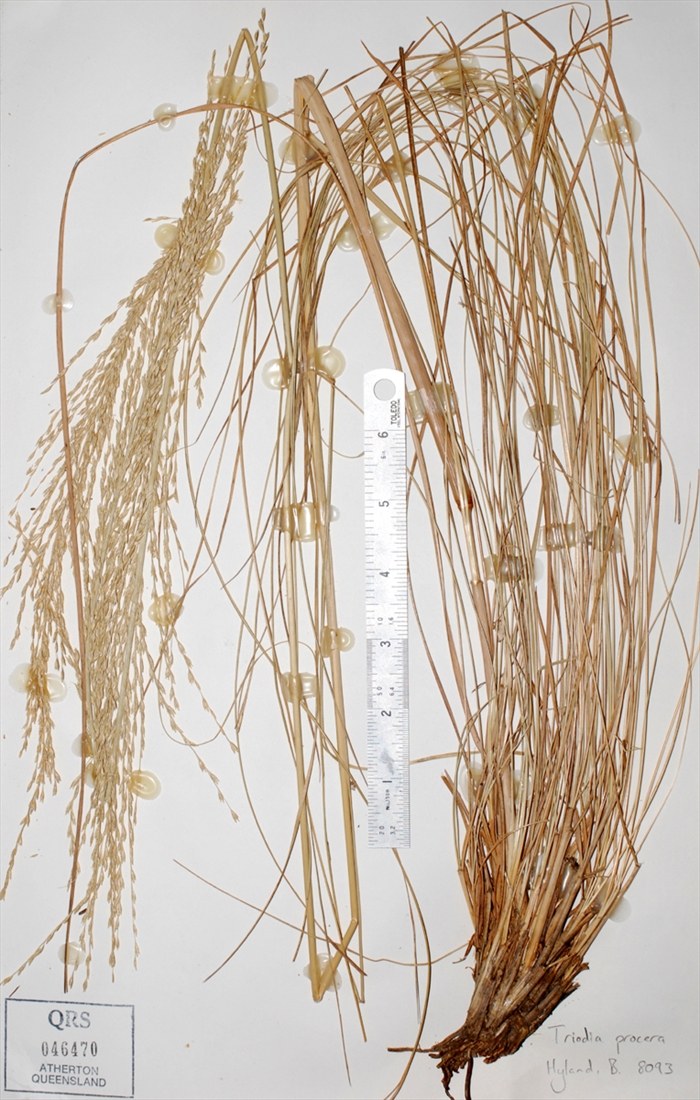Australian Tropical Rainforest Plants - Online edition
Triodia procera R.Br.

Brown, R. (1810) Prodromus Florae Novae Hollandiae : 182.
Densely tufted perennial, with stolons. Culms 150-200 cm tall.
Inflorescence a compound panicle of racemes. Panicle open, 40-100 x 5-9 cm, contracted about thr primary branches. Primary panicle branches 9-18 cm long. Panicle axis scabrous spikelets. Spikelets solitary. Fertile spikelets many flowered, comprising of 3-4 fertile florets, with diminished florets at the apex, oblong, laterally compressed, 4-9 mm long, breaking up at maturity. Spikelets disarticulating below each fertile floret, callus glabrous, base obtuse. Glumes persistent, similar, thinner than fertile lemma. Lower glume oblong, 4-5 mm long, equalling upper glume, scarious or cartilaginous, 3-nerved, keel scabrous. Lower glume surface scabrous, rough on nerves, glabrous, apex entire, acute, muticous. Upper glume oblong, 3-4 mm long, equalling adjacent fertile lemma, scarious or cartilaginous, 1-nerved; lateral nerves absent, glabrous, apex entire, acute, muticous. Fertile lemma lanceolate, 2.8-4.5 mm long, membranous or cartilaginous or indurate, much thinner above and on margins, 3-nerved. Lemma with the lateral nerves close to margins, surface pubescent or hirsute, margins pubescent, apex dentate or lobed, 3-fid, with lobes 0.5-0.7 mm long, acute or acuminate, muticous. Palea keels narrowly winged, surface glabrous. Apical sterile florets resembling fertile though underdeveloped.
Features not available.
Occurs in the top end of the NT. Altitudinal range from near sea level to 35 m. Grows in sandy soil along creeks and billabongs in open forest, vine thicket and Eucalypt woodland.





